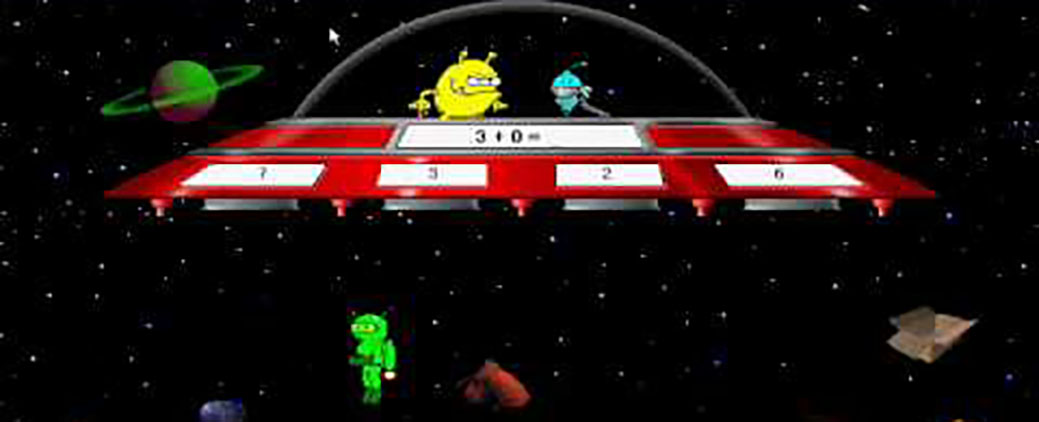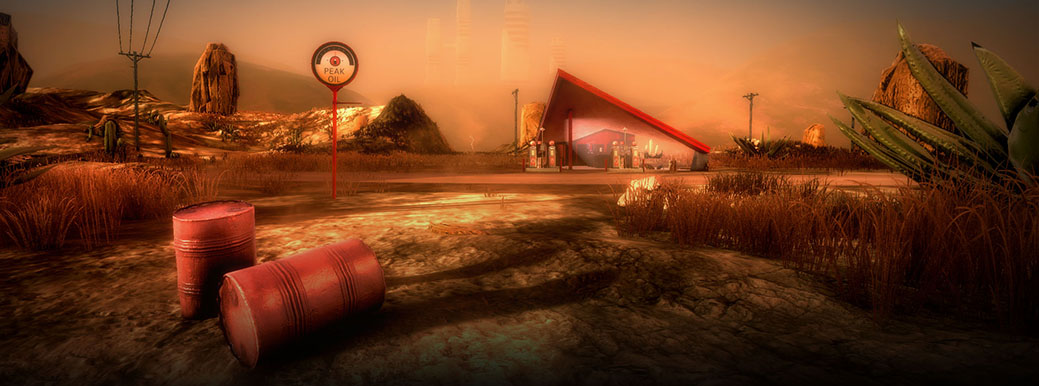
Ten years ago indie game developer and author Sande Chen studied the state of the games for impact movement in the book she co-authored called “Serious Games: Games That Educate, Train and Inform.” We’ve asked her to revisit that work to see what has or has not changed in the field of learning games.
Introduction: The Dark Legacy of Edutainment
The tightrope between entertainment and education has always been one that’s hard to navigate. There’s always been this uneasy tension between entertainment and education, that somehow the educational part needs to be apparent and at the forefront for a game to be called educational.
If an instructor inserts all the quiz questions into a mock game of Jeopardy!, that may seem safer and more educational. For certain, there’s education from the questions and it’s a game, but not one that promotes any deeper analysis of the material.
Suppose then, an instructor decides that all the students should pretend to be thieves and to unlock a jewel-laden safe, they have to do 10 sets of math questions on fractions. This at least has the element of play but would still fall under the category of what is known as chocolate-covered broccoli. Despite the extra yummy fun of pretending to be thieves and potentially getting jewels, a worksheet of math problems is still a worksheet. The math questions are the same whether the children pretend to be thieves or pirates or magic fish.

Kids can see through games that are made for educational purposes, games made for class work.
— Ian Harper, game developer
Lame Games
Chocolate-covered broccoli, the hallmark of 1980s edutainment, is also called pejoratively, “animated flash cards,” “glorified quiz engines,” “reskinned multiple choice,” or “sparkly interactive worksheets.” More than one interviewee referred to the edutainment title, Math Blaster, in which answering math problems leads to animations, as something they would not make. Still, journalists continue the use the word edutainment for all types of educational games despite its history as the laughingstock of the game industry. Blizzard Entertainment even made a spoof of edutainment, a division called Blizzard Kidzz, as an April Fool’s joke.
The negative reputation is one of the reasons several people say large entertainment companies tended to steer away from strictly educational titles.
VIDEO: Math Blaster
“If you take quite familiar teaching practices and then put some space invaders in there,” says Scott Lamb, Technical Director of Kuato Studios, “then I don’t think you’ve reached the full potential of what you can do with the medium.”
Clearly, prioritizing education over entertainment has its limitations. Edutainment is much too blatant. Yet, many developers have found prioritizing entertainment over education can yield the desired results. Kids would rather play an entertainment title over an educational one, even if that entertainment game makes them learn astrophysics.
“Kids can see through games that are made for educational purposes, games made for class work,” says Ian Harper, producer of Inanimate Alice, “and so our game isn’t designed like an educational title. It never was one. It was born as an entertainment title and it’s only morphed into an educational title because teachers wanted it.”
According to Judy Tyrer, founder of 3 Turn Productions, there’s no reason for any tension between education and entertainment, especially when teachers and game designers have the same goals. In both cases, she says, “you’re trying to mold an experience for someone from which they come out hopefully more enlightened, more aware, or knowing something new.”

What hasn’t changed is that education has to constantly compete against entertainment and that will never change.
— Randy Brown, Virtual Heroes
Competing with Entertainment
In 2011, President Obama said, “I’m calling for investments in educational technology that will help create…educational software that’s as compelling as the best video game. I want you guys stuck on a video game that’s teaching you something, other than just blowing something up.”
While the President’s validation of video games in education is welcome, this is still a tall order, considering that developers of blockbuster video games pour millions into production and even more millions into marketing. The budget for educational software is not nearly that much. How can it compete? For educational software to be as compelling as entertainment games, it needs to be just as vibrant, fun, and engaging as entertainment games. Better yet, instead of deciding between two options, it could be a game that teaches and blows stuff up. Just ask players of Kerbal Space Program.
That’s another reason for educational game developers to think entertainment or engagement first, then education. Even in Pre-K markets, says Tammy Kwan, CEO of Cognitive ToyBox, “engagement is key. Parents look to these devices [tablets] as entertainment devices.”
“What hasn’t changed is that education has to constantly compete against entertainment and that will never change,” says Randy Brown, Division Manager of Virtual Heroes. Education isn’t only competing against entertainment games, but also soccer, NetFlix, social media, YouTube, basically anything that kids do in their leisure time. While educational games may be limited to the confines of school, the specter of comparison to entertainment titles is always there.
Even those companies aimed directly at the classroom are starting to realize edutainment is a dead end. According to Matthue Roth, a designer who worked at Amplify, the games were designed to compete with the App Store even though the team knew the games would be sold to schools as supplemental material bundled with curriculum. Given that kids could use their leisure time to download and play any game on a tablet, the team reasoned that Amplify’s games had to be just as good as anything in the App Store.
That’s probably why NASA invested in an immersive multiplayer simulator, Moonbase Alpha, to showcase NASA content and entice young people to enter STEM fields. The game has been downloaded over 1.4 million times through Steam. If the production quality hadn’t been there, kids probably wouldn’t have bothered to look. Kids today have high expectations, especially in regards to computer graphics.
“I’ve seen some really appalling visual presentations in what’s called educational games made specifically for the classroom and I think they’re going to get beaten to death if they don’t make it look like it’s an entertainment title,” says Harper.

Community Learning
There are some games that may be better suited for educational purposes than others. They may be simulators, of higher educational value and lower entertainment quotient, or they may be like Minecraft, open to either and adaptable for subjects ranging from art to history. There are the casual game reskins, say Candy Crush Saga but with periodic table elements, that may help with memorization but have little educational value.
There doesn’t seem to be a monopoly on any one genre of gameplay used in education, but there are games that are hard to categorize. Inanimate Alice, for one, is a multimedia story that will eventually evolve into a full-fledged video game to mirror the development of the protagonist, an aspiring game designer. Over 20,000 teachers, primarily in the U.S., have used Inanimate Alice to illustrate digital narratives. Students are enchanted by the level of engagement provided by the images, text, sound, and mini-games.
Because the audience is split between gamers and non-gamers, a choice was made with episode 3 and episode 4 to provide a read-only, game-optional version. Even in the most current installment, episode 5, which was made in Unity, the games are very simplistic. Since episode 5 features protagonist Alice at age 16, she apparently hasn’t progressed as a game designer to more complex gameplay. When played, the results of these mini-games do have an impact on the story, but it remains to be seen if they will evolve beyond mini-games. While it is hoped that by the final episode 10, Inanimate Alice will have the trappings of a video game experience, it is clear that Inanimate Alice favors story over gameplay.
According to Inanimate Alice‘s author, Kate Pullinger, Professor of Creative Writing and Digital Media at Bath Spa University, teachers began expressing interest almost immediately, but adoption of Inanimate Alice into schools and universities really took off after the creation of lesson plans. Students would use various creation tools, such as music and photo editors, video cameras, and Powerpoint, to make unofficial extensions of the Inanimate Alice story, actively learning how to create a digital narrative. It has been suggested that Inanimate Alice also provides an opportunity to introduce game programming. This user-generated content not only promotes community but also gives students a chance to participate in a shared, ongoing story.
This kind of participatory community is not to be underestimated. Games like Minecraft and The Sims have inspired an outpouring of creativity among its players. Countless mods of games through level editors, world editors, art swaps, and construction tools, have led to unique game experiences. Counter-Strike and Team Fortress are well-known games that first started out as mods of another game. MassiveCraft is an example from Minecraft, featuring hundreds of user-generated creations, its own faction system, and player economy.
VIDEO: Massivecraft
Of particular note, MassiveCraft is a medieval fantasy role-playing server, which means that players must constrain their behavior to accepted background lore or risk punishment. To do this, players must have an intimate knowledge of the story or the rules. This is similar to live-action role-playing games (LARPs) whereby a player assumes the identity of a character throughout the game’s duration, except that MassiveCraft happens online. Players share a tacit agreement to create an immersive experience together.
Role-playing servers are common for games in fantasy settings and historical eras like WWII. They rely on their members to participate in a shared fiction. A top draw to the upcoming massively multiplayer online game (MMOG) Ever, Jane, which fans have called a virtual Austenland, would be in the role-playing to maintain the integrity of Regency era customs.
As with Inanimate Alice, educators contacted developer Judy Tyrer to see if they could use Ever, Jane as a companion game to Regency era literature. Although still in development, the game had generated a lot of excitement within literary circles. In addition to consumer subscriptions, Tyrer plans to sell private servers to schools so as to ensure privacy and student safety. She says, “If a studio has a game and they’re not looking at the educational market, then they’re missing out.”
Still, Ever, Jane‘s primary focus will be the entertainment market, and according to Tyrer, this is a good thing because it allows her to prioritize fun over historical accuracy.
For example, Tyrer herself has written that because players want to have more choices than two white characters, the cultural diversity in Ever, Jane will likely not be historically accurate. This, however, does not dismiss Ever, Jane from becoming a useful pedagogical tool.
What Ever, Jane can provide is immersion into the culture of a specific time period, into a new way of experiencing and understanding history. Furthermore, the game mechanics reinforce what was important for ladies in the Regency era. Instead of epic battles, players seeking higher social status would want to be invited to grand balls. Instead of gunplay, there’s malicious gossiping. “The rest of the game industry has all the battles they can have,” says Tyrer. For her, what’s interesting is the history of culture.
While these examples may seem atypical of the standard gun-toting game industry fare, they represent the breadth of variety available to educators from the entertainment sector. There are games like Kerbal Space Program full of “stealth learning,” for learning without even realizing it, and there are games like Minecraft that inspire learning through participation and creativity. Then there are the games where educational elements are included, but made optional. If participatory education is about opting in and sharing, then these games embrace a reluctant learner’s choice to opt out.
When I was a kid, I played a lot of educational games and it bugged me that there was this undertone that I was being forced into or coerced into learning things.
— Matthue Roth, former Amplify game developer
Opting In
For some kids, games are the highlight of the day. Bernard Francois, Managing Director of Preview Labs, recalls how the educational games he played in school made a lasting impression simply because they were a welcome break from the normal routine. For others, games cease to be fun when it’s a structured environment and if given the chance, they will horse around and ignore the lesson.
“When I was a kid, I played a lot of educational games and it bugged me that there was this undertone that I was being forced into or coerced into learning things,” says Roth.
Developer Charlotte Ellett echoes the same sentiment, explaining the opt-in learning in C63 Industries’ indie game Pixel: ru2: “We didn’t set out to force people to have an educational experience. It’s there optionally,” she says, adding she considers the game to be entertainment but with educational possibilities.
On the surface, Pixel: ru2 is a platform puzzle game about a sentient pixel trying to save the last of the Earth’s historical images from a deadly virus. After the player solves the puzzle, a picture is revealed from Earth’s history along with an offer to learn more about the event portrayed by the picture. In playthroughs on YouTube, players have been seen to click through for more information, but have complained that it would be nicer if the game didn’t refer to Wikipedia so much. Another incorrectly believed that knowing more meant continuing on with the game and discovering more images.
Still, the images shown in the game were specifically chosen by the designers to highlight the importance of space and computer history. Regardless of whether or not the players opt in to learn more, they will see these images if they beat the levels. The images function more as teasers and with repeated sightings, become familiar. For a player trying to conscientiously avoid educational content, this is at the barest minimum, maybe at the level of fun facts, but still reflects what was pre-selected by the designers. Really, the designers could have chosen anything to be important to a sentient pixel, such as one of Roy Lichtenstein’s paintings or a giant STOP sign.
As can be seen, opt-in learning doesn’t mean that there isn’t any educational content in the game because that would be hard to do when creating a game, but rather, it allows the player to feel more in control.
Since the puzzles and the game mechanics do not have much to do with space and computer history, Pixel: ru2 is not a good example of “stealth learning.” However, the game does highlight how entertainment game developers are finding openings to make their games more meaningful to the audience and to themselves. Opt-in learning is a design choice, one that can perhaps reach reluctant learners. It’s OK if these reluctant learners are having fun, maybe more fun than with an educational title, but in the end, they do end up learning something.

Conclusion
The educational potential of entertainment games was what initially drew educators to believe in the power of games in the classroom. But what was offered, the edutainment of the 1980s and 1990s, emphasized education over entertainment.
They were bad games and the industry is trying to overcome that history.
Lately, though, large entertainment companies have ventured into what might be considered more serious, meaningful content and indie game developers have certainly brought attention to thought-provoking issues. Perhaps the time is right for an entertainment-education convergence, in which a game for entertainment can also be a game for education. Education would no longer compete with entertainment because education would be entertainment.
After all, the best teachers are entertainers in their own way. They can make students passionate about any subject, even the National Bank Act of 1865. That’s because at its essence, learning is fun. Games are merely a way to reawaken the fascination once held in younger years and rediscover the world through play.
“Rather than chocolate-covered broccoli,” says designer Matthue Roth, “we’re taking our inspiration from the source material.”
While it’s true that there are still challenges to adoption and entertainment games may need to be adapted to classroom use, I believe the future is bright for entertainment games with educational possibilities. Savvy teachers are already contacting developers about games that could be used in conjunction with curriculum. Entertainment game developers can stick to prioritizing fun without feeling pressured.
As Zach Barth said in his interview to Gamasutra: “I’m so glad to not have to label our game as educational. Because you know what? We’re going to sell so many more copies by having a game that’s not called educational, but is secretly educational. Just because we can sell straight to the people who actually want to play it, and find it appealing. And the educational qualities that somehow make their way in are strictly a value-add.”
Another added value might be the wealth of information in what’s known as meta-gaming, or the discussions, fandom, and speculation surrounding a game. Creating new episodes of Inanimate Alice, in just the same way devoted fans of a TV show create fan fiction, would be considered part of meta-gaming. The next article will explore how games can facilitate peer-to-peer teaching through meta-gaming, digitally and non-digitally, and outside the classroom in informal settings like museums, after-school programs, and summer camps.
 Sande Chen is the co-author of Serious Games: Games That Educate, Train, and Inform. As a serious games consultant, she helps companies harness the power of video games for non-entertainment purposes. Her career as a writer, producer, and game designer has spanned over 10 years in the game industry. Her game credits include 1999 Independent Games Festival winner Terminus, MMO Hall of Fame inductee Wizard101, and the 2007 PC RPG of the Year, The Witcher, for which she was nominated for a Writers Guild of America Award in Videogame Writing. She has spoken at conferences around the globe, including the Game Developers Conference, Game Education Summit, SXSW Interactive, Serious Play Conference, and the Serious Games Summit D.C. She writes about serious games, game design, and other topics on her blog, Game Design Aspect of the Month and can be found on Twitter @sandechen.
Sande Chen is the co-author of Serious Games: Games That Educate, Train, and Inform. As a serious games consultant, she helps companies harness the power of video games for non-entertainment purposes. Her career as a writer, producer, and game designer has spanned over 10 years in the game industry. Her game credits include 1999 Independent Games Festival winner Terminus, MMO Hall of Fame inductee Wizard101, and the 2007 PC RPG of the Year, The Witcher, for which she was nominated for a Writers Guild of America Award in Videogame Writing. She has spoken at conferences around the globe, including the Game Developers Conference, Game Education Summit, SXSW Interactive, Serious Play Conference, and the Serious Games Summit D.C. She writes about serious games, game design, and other topics on her blog, Game Design Aspect of the Month and can be found on Twitter @sandechen.
